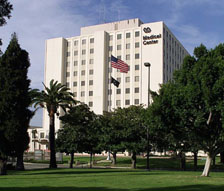|
|


Mycobacterium tuberculosis has the fascinating ability to persist in the host for long periods of time despite acquired immunity. During this time the tubercle bacilli are thought to reside in a state of nonreplicating persistence (NRP). Cultivation of M. tuberculosis under conditions leading to the controlled gradual depletion of oxygen (Wayne Model) produces two different nonreplicating states. The first stage, termed NRP-1, occurs when oxygen decreases to the microaerobic level (1%). The second stage, NRP-2, occurs when the oxygen levels decreases to anaerobic levels (0.06%). M. tuberculosis is classified as an obligate aerobe and so replication abruptly stops when cultures shift down into NRP-1. As M. tuberculosis enters NRP-1 there is a significant increase in the reduction of nitrate. In an anaerobic environment many bacteria use nitrate as the final electron acceptor to generate the proton gradient for ATP production. We have proposed that during latency M. tuberculosis uses nitrate as an energy source in place of oxygen. Our lab focuses on the nitrate reductase system of M. tuberculosis. We have shown that narGHJI encodes both the aerobic and the NRP-1 nitrate reductase enzyme. Expression of this operon is constitutive and not induced by hypoxia, nitrate or nitrite. The great induction of activity seen during shiftdown is due to induction of narK2 which codes for a nitrate transporter. Our recent work has focused on the regulation of the activity of NarK2. |